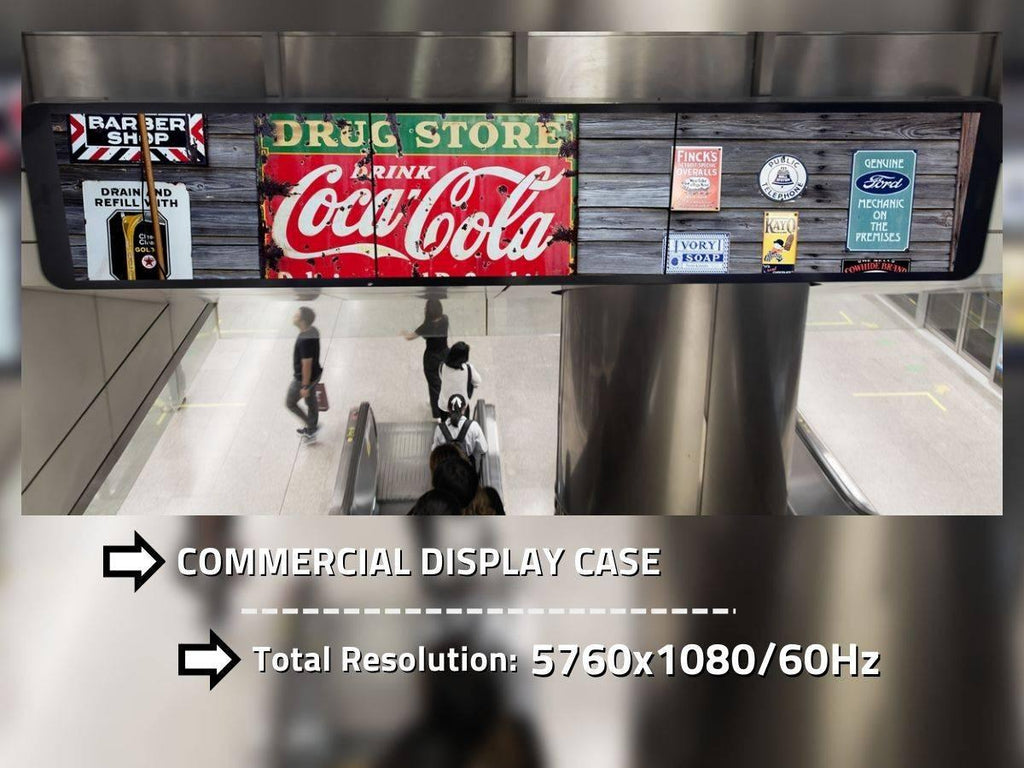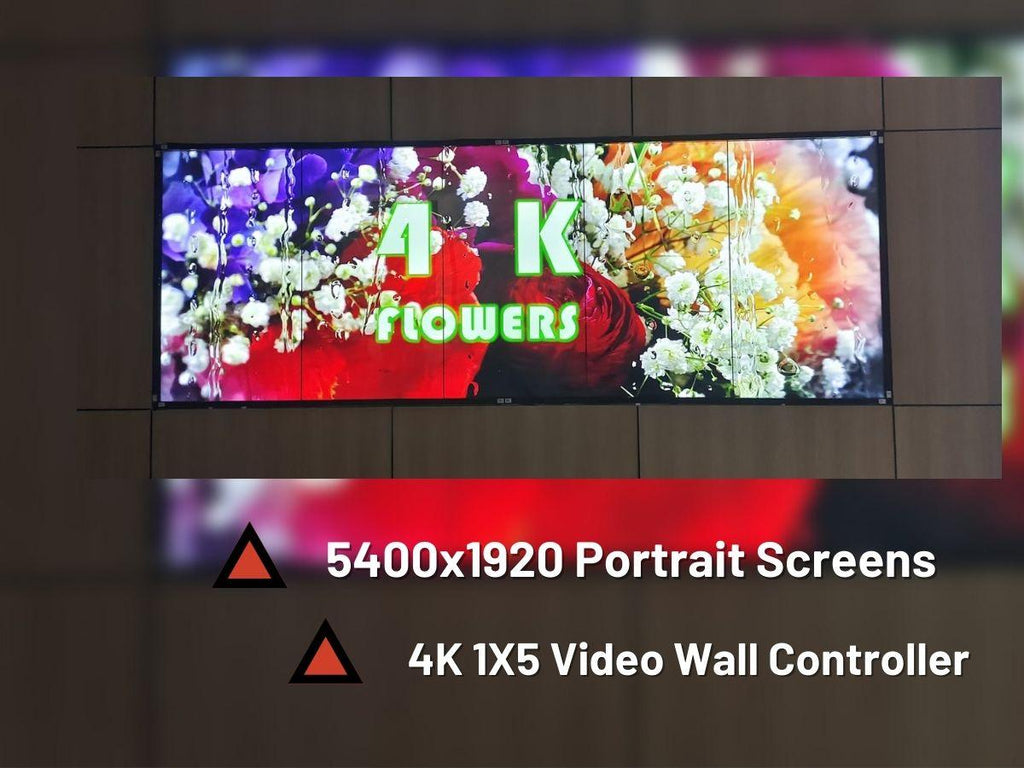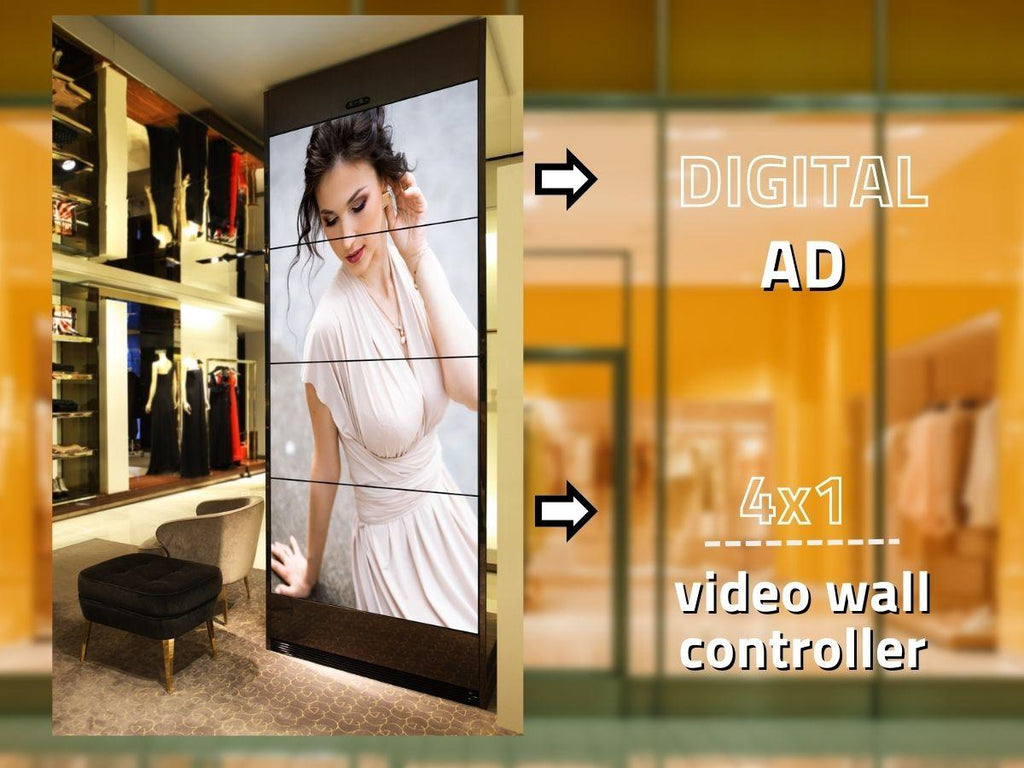Why you need a projection edge blending controller Embedded Projection Server
Why And What is Projection Edge Blending Controller Embedded Projection Server
Projection blending is a technique that combines two or more images to create a single image. It is often used in immersive spaces, exhibition halls, and store layouts.
Edge blending is a process that is essential to combine two or more projected images to create a single image. It is the process of adjusting the projected image through software so that the overlapping portions of multiple projected images can be completely blended into one, giving the image a more integrated look. This process can be done manually by adjusting the projector, but in most cases the results are not good, or by using the controller's embedded software and then modifying it using the host computer or directly using the PC software of the input source.
In terms of convenience, the projection blending controller is an important part of your projection solution setup, as it helps you to set up seamlessly blended projection images faster and without any distortion. And in small showroom or store setups, an external PC as an input source can be a pain in the ass to place or a problem to solve quickly. The projection fusion controller can use USB flash drive as the input source and play the video and images directly from it, which is more stable and efficient.


Exhibition Hall Projection Blending
How to make an excellent drop shadow effect with seamless edge blending?
First of all, in terms of equipment selection, it is best to meet the following conditions
(1) The same projector is the best
(2) If you need to use different projectors, try to use the same focal length, throw ratio, and lens, preferably with similar brightness and similar color parameters, including color temperature and chroma.
Of course, the best way to achieve consistency in brightness and color parameters is to choose a machine manufactured from the same batch with the same configuration of parameters. These are the primary requirements for a successful multi-projection project, and with them it is much easier to blend the projection images. However, if certain requirements are not met, such as resolution or lens differences, the color and brightness of the image will not always match. Eventually, there will be problems that edge blending cannot solve.
In addition to calculating the spacing between devices and the projections that need to be stitched together, there are two other major factors in a successful multi-projection project, the first being seamlessness (i.e., precise geometric correction) and the second being image consistency (i.e., brightness and color consistency)
So How to adjust the effect of the seams between the projection screens so that they look like one projector is throwing the picture?
The point is mainly three things.
1. device adjustment, this according to different projectors, debugging methods are different, mainly two aspects. One is the projector comes with the image automatic adjustment, so that the projection screen and the projection curtain for a preliminary match, the second is to manually adjust the lens shift knob, as well as the image zoom, so that the image more closely fit the curtain
2. There are generally two methods for geometric positioning of the projection screen, external software or image distortion/edge blending processor. In addition to the basic adjustment of the four corners of the projection, it is necessary to be able to freely adjust any area within the projection so that it can support edge blending for regular rectangular output and also for irregularly shaped output, such as curved, columnar, etc. The more grid blocks supported at the time of adjustment, the higher the adjustment accuracy that can be achieved, resulting in a better seamless effect.
3. The consistency of the projection image includes the consistency of brightness and color
Before edge blending, the basic configuration is applied to each projector, including setting the same display mode, color temperature, and brightness and measuring color parameters to reduce picture differences between projectors. Brightness and color adjustments are made after edge blending, and RGB color parameters are adjusted so that the overall projection has uniform brightness and color. The BIT-EPF-103 used in Projection Blending Solution has an embedded seam brightness adjustment tool and projection grid block alignment tool to help you quickly adjust to perfect seamless edge blending.

Projection Blending of children's play space

Showroom projection blending
About BIT-EPF-103
It is a new projection blending device from Bitvisus, which is able to set up the edge blending of up to three projectors to make a complete oversized image using the embedded projection blending service. The most important feature of this device is that there is no need to connect another PC or other input source, just put the content you need to play into a USB flash drive and plug it into the device, and then adjust the playing rules through the software for non-stop play.
For more information about the product, please visit the product page or Chat with us.
Request a Solution? Or Product Problem?
Please fill out the quick form and we will be in touch with lightning speed.




